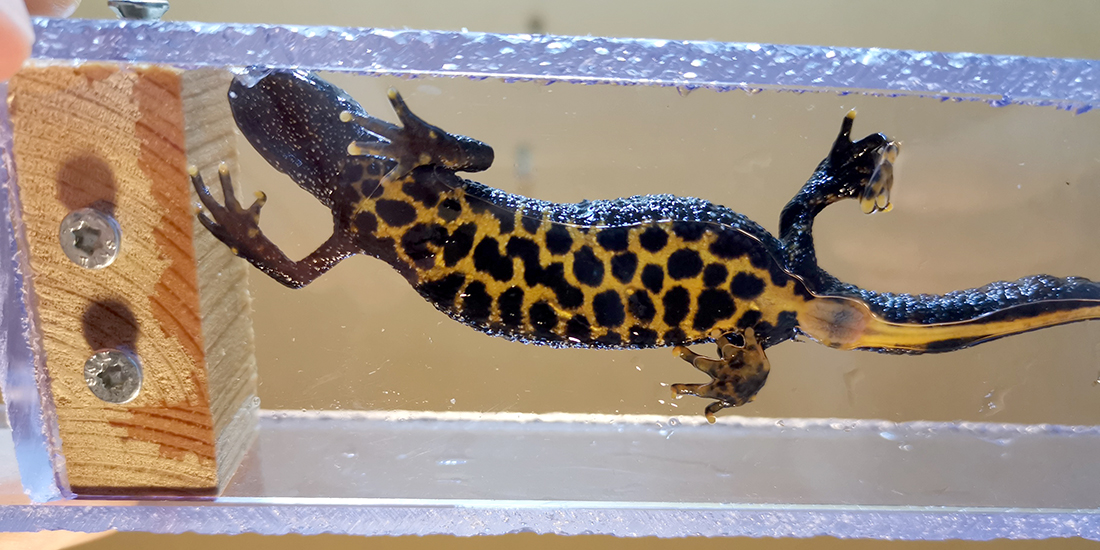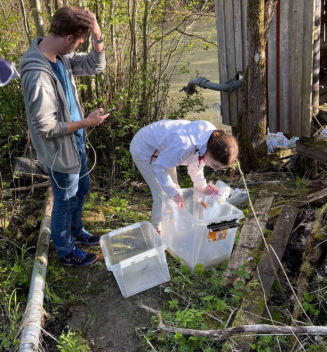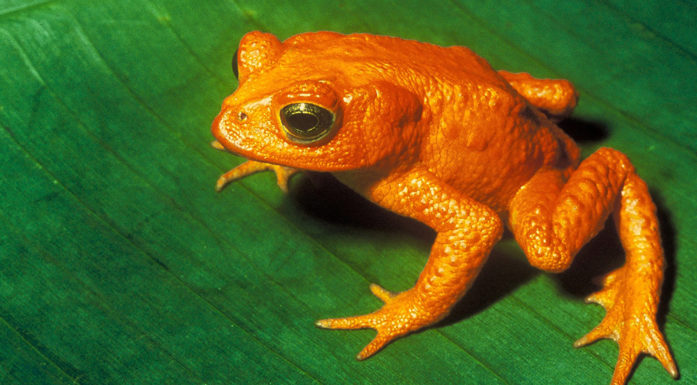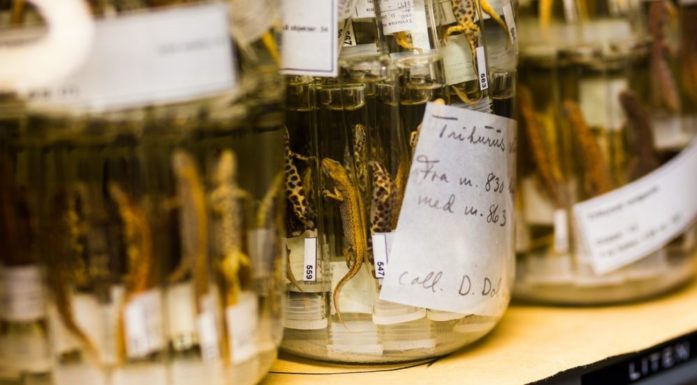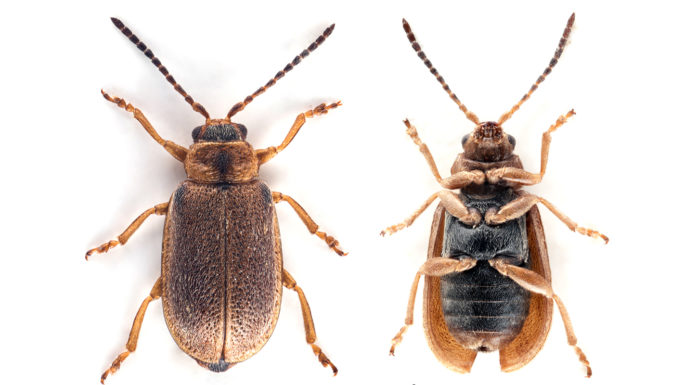New technology can count endangered salamanders
The stomach patterns of salamanders are as unique as human fingerprints. This feature will be used in an app to record salamander numbers.
To help conserve vulnerable species, it can be helpful to have an overview of the number of specimens in an area. Four programming students at NTNU in Gjøvik were commissioned by the Norwegian Institute for Nature Research (NINA) to further develop an app to avert having salamanders go extinct.
The students’ task was to develop an algorithm for the app. The first version was created in 2019. It could recognize salamanders, but the students had to program the app so that the salamanders could be detected automatically.
The four NTNU students in the project are Andrea Magnussen, Herman Andersen Dyrkorn, Eirik Martin Danielsen and Anders Sundstedt Langlie. They submitted their final bachelor’s thesis in programming in the spring.
Records salamanders
The patterns on salamander stomachs are unique in the same way as fingerprints are for humans. By comparing salamander patterns, researchers can determine if they’ve caught the same salamander before.
The app works by the researcher taking a picture of the salamander’s stomach. If a salamander with the same pattern has been recorded, the app says so. If not, the new salamander is recorded on the app. The researcher or user then adds information to the new image.
Important application
The reason for the project focus on salamanders in particular is that the salamander population in Norway has declined drastically in recent decades. Norway is home to two species: great newts and small newts. Both are on the red list of threatened species, which means that they could be at risk of eventually becoming extinct.
“NINA has been active in calculating the numbers of these animals and wanted a tool that could be used to support their population counts. The app is important for tracking whether the population is increasing,” says the research group.

The salamander population in Norway has declined drastically in recent decades. Photo: The student project
Making it easier for researchers to record and identify salamanders will also make it easier to calculate the population size, according to the group. Then NINA can monitor whether the measures they have implemented to increase the population have had the desired effect.
“Previously, NINA marked the salamanders with a microchip to be able to know if a salamander had been caught before. This was relatively cumbersome, since the procedure requires people who mark the animals to be certified. In addition, tagging the animals this way is definitely stressful for the animals. Taking and using a single image is both more humane and more efficient.
Researcher Børre Dervo was the students’ contact person at NINA.
